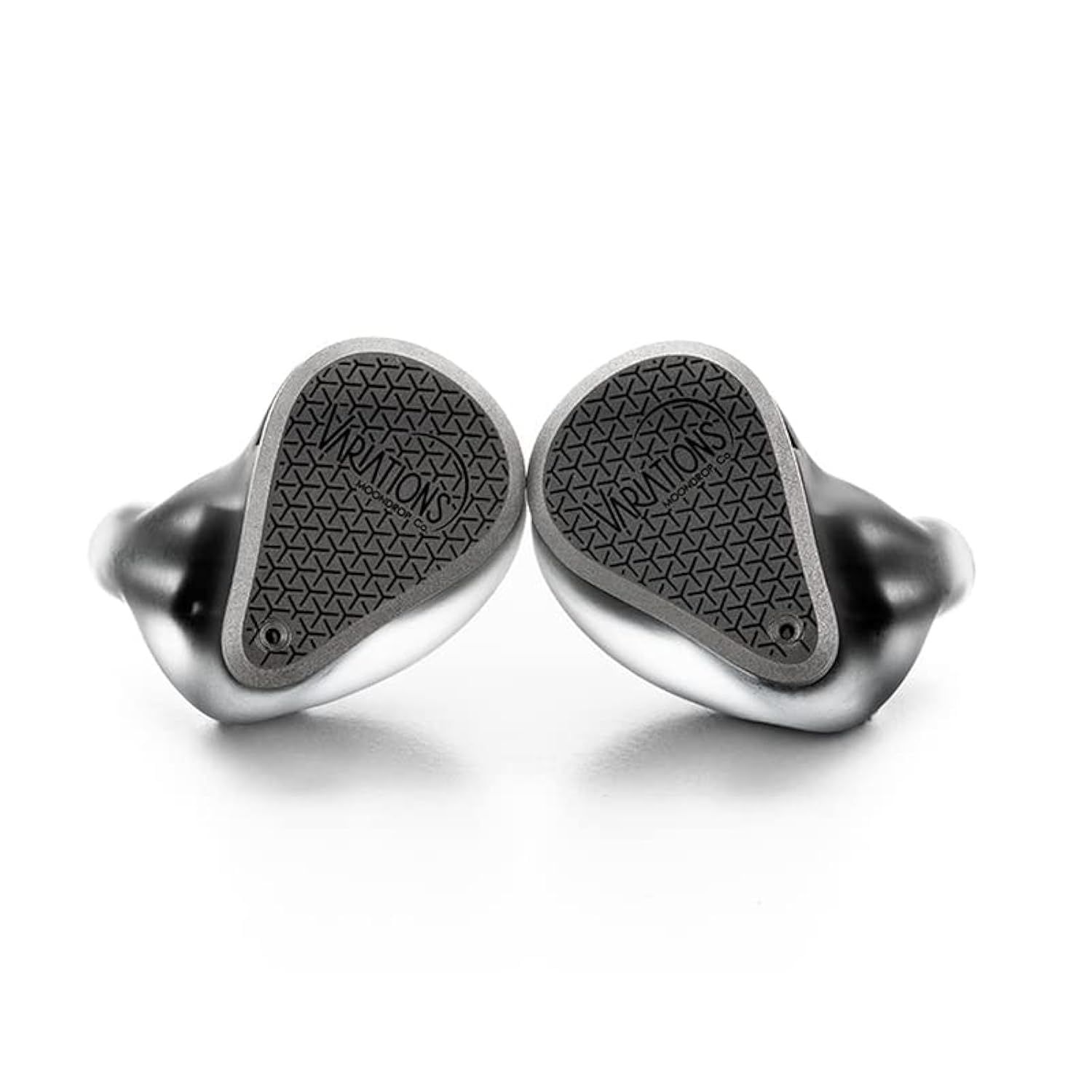Tea Provs.Variations
Sound & Specs Comparison
Information
Both IEMs are widely regarded in the audiophile community. See how they differ in terms of sub-bass response, upper mids, clarity, and overall tonality. Spider charts and rating breakdowns included.
Objective Comparison
Facts, details, stuff.
| General Info | Tea Pro | Variations |
|---|---|---|
| Brand | XENNS Mangird | Moondrop |
| Country | – | China |
| IEM Description | – | Moondrop Variations is a hybrid in-ear monitor combining electrostatic, balanced armature, and dynamic drivers for a precise and immersive listening experience. Known for its balanced, reference-style tuning with tight bass, clean mids, and extended treble, it’s a favorite among audiophiles who crave clarity and technical performance. Ideal for detail lovers and those seeking a high-fidelity sound signature. |
| Price Level | 100 – 500 | 500 – 1.000 |
| Housing & Driver | ||
|---|---|---|
| Driver Config | – | Tribrid |
| Driver Types | – | Dynamic Driver + Balanced Armature + Electrostatic |
| Shell Material | – | Copper |
| Cable | – | – |
| Technical | ||
|---|---|---|
| Freq Range | – | 9-40,000 Hz |
| Impedance (Ω) | – | – |
| Sensitivity (dB) | – | – |
| Crossover | – | – |
| Platform Info | ||
|---|---|---|
| Comments | 0 | 1 |
| Visit Count | 67 | 89 |
| External Reviews | 0 | 3 |
Meta Ratings
Sound-wise, Tea Pro provides a subtly more refined presentation, with improved detail retrieval, microdynamics, and instrument layering when compared to Variations (7 vs 6.5). For comfort fit, Variations performs barely better (7 vs 6.5). Users may find the Tea Pro cable readably more confidence-inspiring for both daily use and long-term durability.
| Tea Pro | Variations | |
|---|---|---|
| Sound | 7.0 | 6.5 |
| Comfort Fit | 6.5 | 7.0 |
| Build Quality | 6.5 | 6.5 |
| Stock Cable | 6.5 | 5.5 |
| Accessories | 6.0 | 6.0 |
Sound Characteristics
Variations delivers a deeper and more extended sub-bass, reaching lower frequencies with greater authority than Tea Pro (6.5 vs 6). Tea Pro renders bass with s greater punch and separation, where Variations sometimes feels bloated (7 vs 6.5). Variations translates bass vibrations into a a more visceral experience, while Tea Pro lacks this tactile feedback (8.5 vs 7). It achieves a better warmth and coherence in the lower mids, bringing more realism to guitars and cellos (7.5 vs 6.5). It strikes a a better balance between presence and smoothness in the upper mids compared to Tea Pro (8 vs 6). The treble on It is a more nuanced and refined, especially when it comes to cymbals and ambient elements (7.5 vs 7). Listeners may notice that It presents sounds with a more lateral space, giving recordings more openness than Tea Pro (7.5 vs 7). It extracts low-level details a more effectively, helping subtle nuances emerge clearer than on Tea Pro (8 vs 7). It shows a better control of masking effects, maintaining clarity across frequency ranges better than Tea Pro (7 vs 6.5). Notes on It feel a more grounded and weighty, whereas Tea Pro can sound thin or hollow (8 vs 7). It delivers m stronger slam and physicality, making drums and transients hit harder than Tea Pro (8.5 vs 7). It controls harsh sibilant peaks m more effectively, making vocals smoother than on Tea Pro (9 vs 6). It renders timbres with a better harmonic balance, preserving the character of instruments more accurately than Tea Pro (7.5 vs 7). Tonality on It is a more coherent and refined, yielding a more pleasing overall signature than Tea Pro (7 vs 6.5). It renders texture d more precisely, making instrument surfaces and vocal grain more palpable than Tea Pro (7.5 vs 6).
| Tea Pro | Variations | |
|---|---|---|
| Sub Bass | 6.0 | 6.5 |
| Bass | 7.0 | 6.5 |
| Bass Feel | 7.0 | 8.5 |
| Lower Mids | 6.5 | 7.5 |
| Upper Mids | 6.0 | 8.0 |
| Lower Treble | 7.0 | 7.5 |
| Upper Treble | 8.0 | 8.0 |
| Sound Stage Width | 7.0 | 7.5 |
| Detail | 7.0 | 8.0 |
| Layering | 7.0 | 7.0 |
| Masking | 6.5 | 7.0 |
| Note Weight | 7.0 | 8.0 |
| Slam | 7.0 | 8.5 |
| Sibilance | 6.0 | 9.0 |
| Timbre Color | 7.0 | 7.5 |
| Tonality | 6.5 | 7.0 |
| Texture | 6.0 | 7.5 |
Tonal Signature
// Nothing to compare yet.

